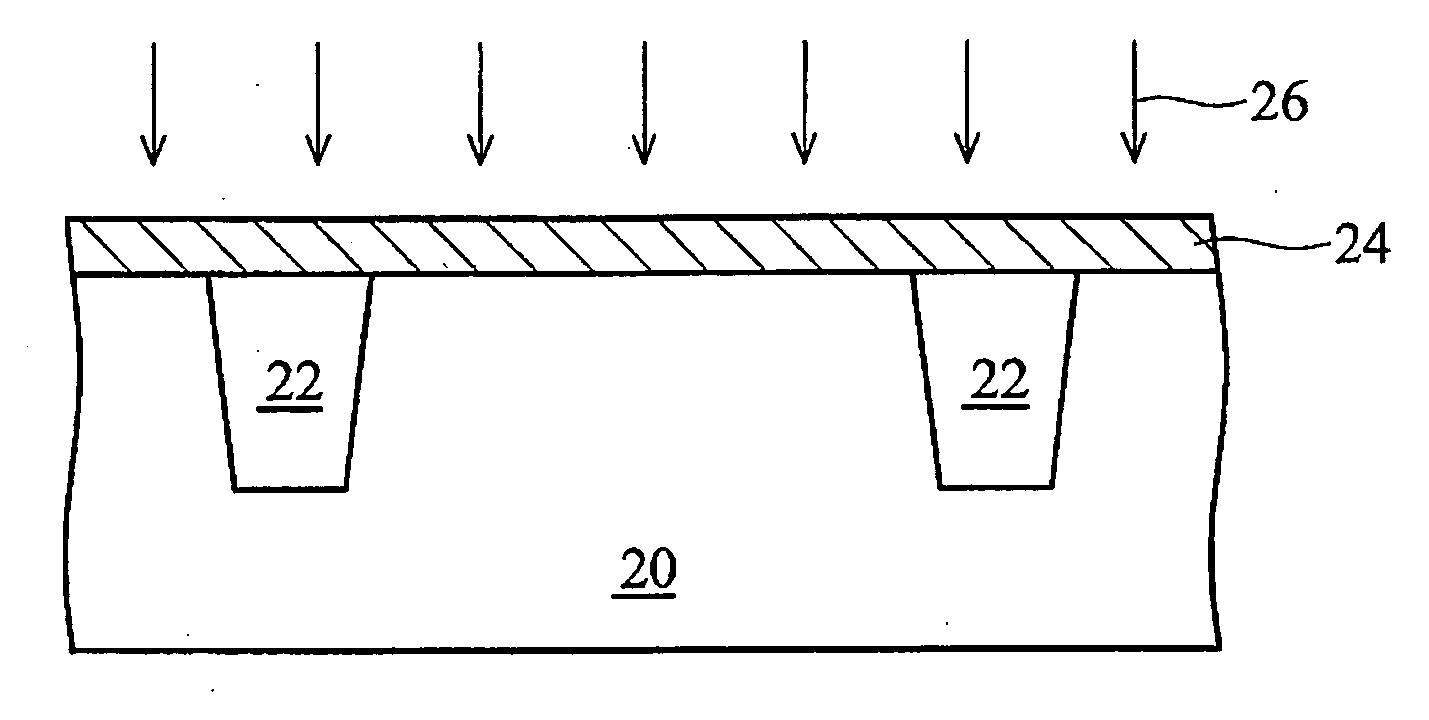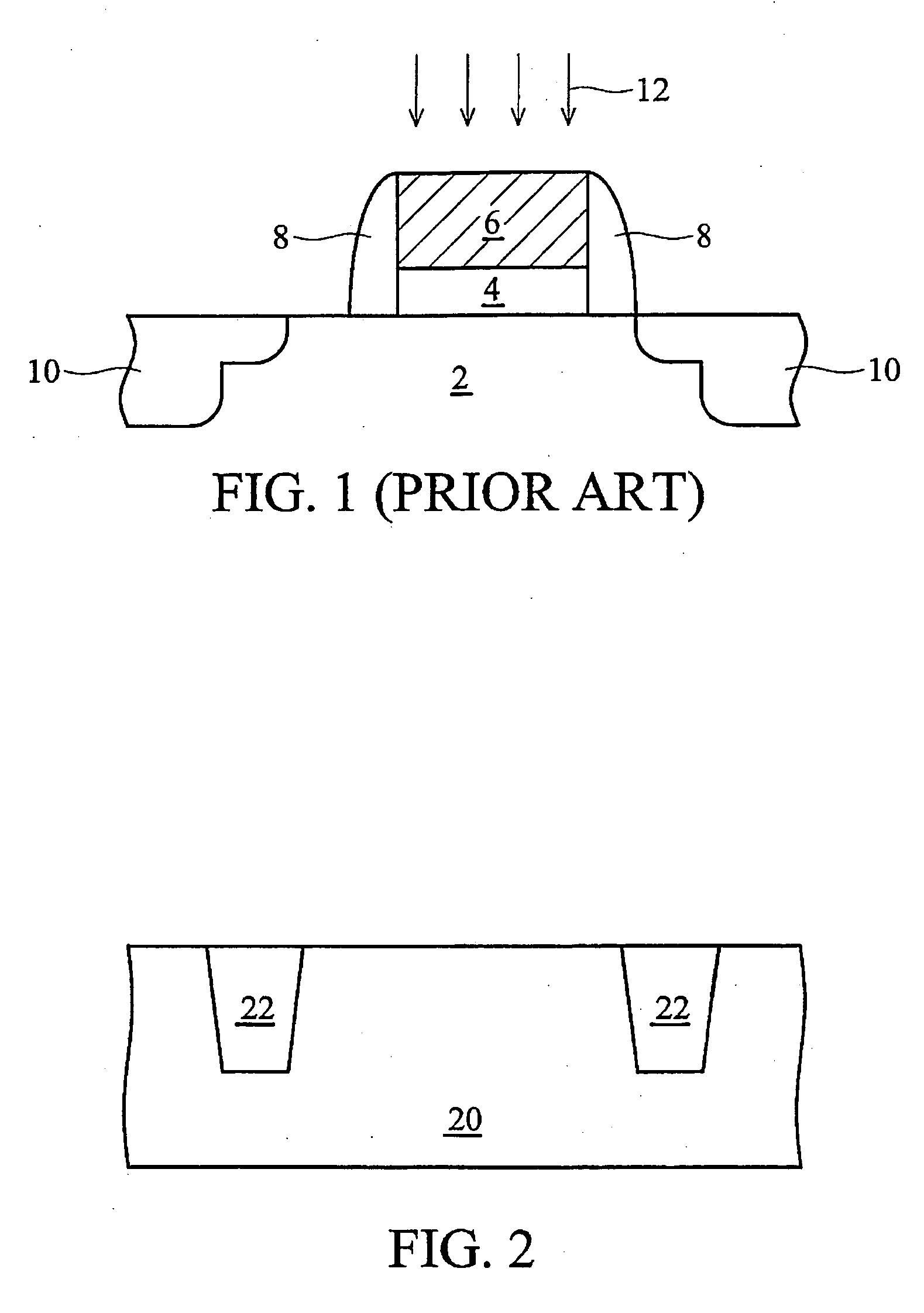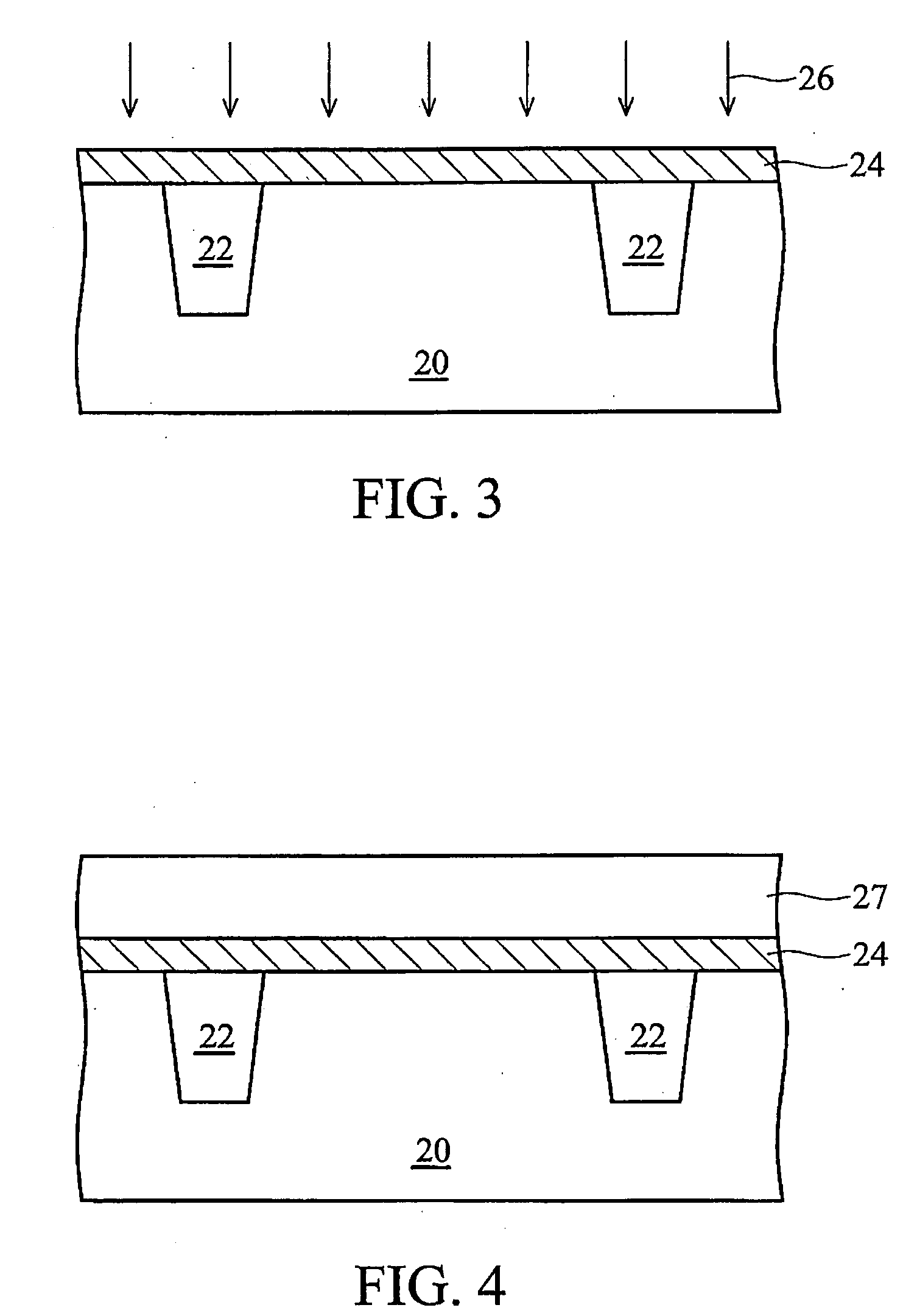Laser spike annealing for gate dielectric materials
- Summary
- Abstract
- Description
- Claims
- Application Information
AI Technical Summary
Benefits of technology
Problems solved by technology
Method used
Image
Examples
Embodiment Construction
[0015] The making and using of the presently preferred embodiments are discussed in detail below. It should be appreciated, however, that the present invention provides many applicable inventive concepts that can be embodied in a wide variety of specific contexts. The specific embodiments discussed are merely illustrative of specific ways to make and use the invention, and do not limit the scope of the invention.
[0016] The preferred embodiments are illustrated in FIGS. 2 through 6, wherein like reference numbers are used to designate like elements throughout the various views and illustrative embodiments of the present invention.
[0017]FIG. 2 illustrates the formation of shallow trench isolations (STI) 22 in a substrate 20. In the preferred embodiment, substrate 20 is a silicon substrate. In other embodiments, substrate 20 comprises other commonly used materials such as germanium, carbon, and / or their combinations. STIs 22 are formed in the substrate 20, preferably by etching shall...
PUM
 Login to view more
Login to view more Abstract
Description
Claims
Application Information
 Login to view more
Login to view more - R&D Engineer
- R&D Manager
- IP Professional
- Industry Leading Data Capabilities
- Powerful AI technology
- Patent DNA Extraction
Browse by: Latest US Patents, China's latest patents, Technical Efficacy Thesaurus, Application Domain, Technology Topic.
© 2024 PatSnap. All rights reserved.Legal|Privacy policy|Modern Slavery Act Transparency Statement|Sitemap



